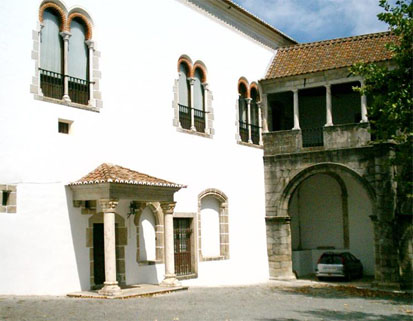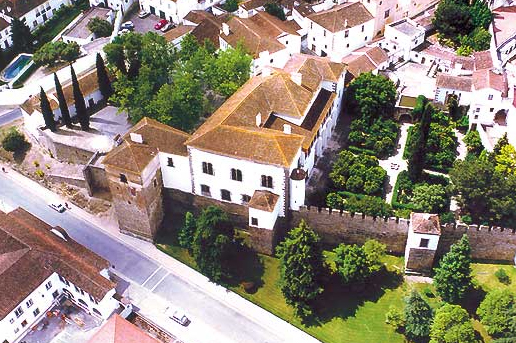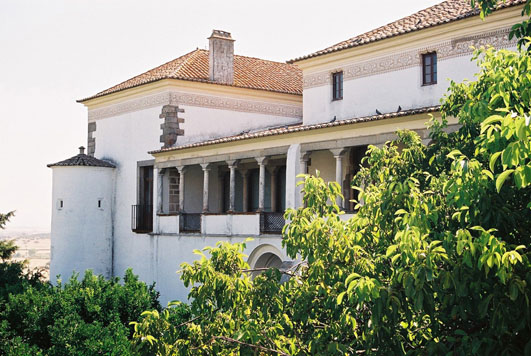




Index
| Castles and Palaces - Page 4 | |||||||||||||||||||||||||||||||
| The Palace of the Counts of Basto, in the city of �vora, was the seat of the Arab rulers of the town until it was conquered in 1166 by the Christians. In the 14th century it was used as royal palace, being partially destroyed during the Civil War of 1383-1385. In the second half of the 15th century, king Afonso V gave it to a nobleman, but the palace was used several times by Portuguese kings staying in �vora. King Sebastian I, for instance, lived in the palace when attending �vora University in the middle of the 16th century. The palace has its main parts dating from the 14th to 16th centuries, of different styles. | |||||||||||||||||||||||||||||||
 |
|||||||||||||||||||||||||||||||
| Courtyard of the Palace of the Counts of Basto. The building on the left has typical bipartite windows on the moorish late-gothic (mud�jar) style typical of the Alentejo region. The portico and gallery on the building of the right are in renaissance style. | |||||||||||||||||||||||||||||||
 |
|||||||||||||||||||||||||||||||
| Aerial view of the Palace of the Counts of Basto. The palace was built using the preexisting Roman and mediaeval walls of the city, incorporating defensive towers. The garden of the palace can be seen on the right, with the main courtyard and entrance on the left. | |||||||||||||||||||||||||||||||
 |
|||||||||||||||||||||||||||||||
| Palace seen from the garden. The renaissance gallery (16th century) allowed the inhabitants of the palace to enjoy a beautiful view of the garden and surroundings. The round tower and sgraffito decorative patterns (on the upper parts of the building walls) are also typical of the Renaissance. The small windows are manueline. The rooms inside the palace are decorated with Renaissance frescos by Flemish painter Francisco de Campos (around 1578). | |||||||||||||||||||||||||||||||
| A Royal Palace was built in �vora between the middle of the 15th to the begining of the 16th century. This palace was the setting for several administrative meetings of the kingdom (Cortes), royal births and weddings, and it was in that palace that king Manuel I gave Vasco da Gama the instructions to go to India. Unfortunately, the whole palace was eventually demolished, with the exception of the gothic Royal Chapel (Church of Saint Francis) and the building known as Ladie's Gallery (Galeria das Damas). The latter was finished around 1506, during the reign of D. Manuel I and, accordingly, shows signs of the manueline and renaissance periods. | |||||||||||||||||||||||||||||||
 |
|||||||||||||||||||||||||||||||
| Fa�ade of the Southern wing of Ladie's Gallery. The balcony is supported by delicate horseshoe-shaped arches in the typical mud�jar-gothic style of �vora. The second floor has two beautiful bipartite manueline windows with horseshoe arches, also indicating mud�jar (moorish) influences. The decorative frieze of the balcony is modern. | |||||||||||||||||||||||||||||||
 |
|||||||||||||||||||||||||||||||
| Lateral fa�ade of Ladie's Gallery showing its manueline tower. The first floor of the tower has a beautiful loggia to look at the surrounding garden, and early Renaissance windows decorate the second floor. A series of manueline windows are seen on the South wing of the building (left). | |||||||||||||||||||||||||||||||
| Page 5 Index |
|||||||||||||||||||||||||||||||